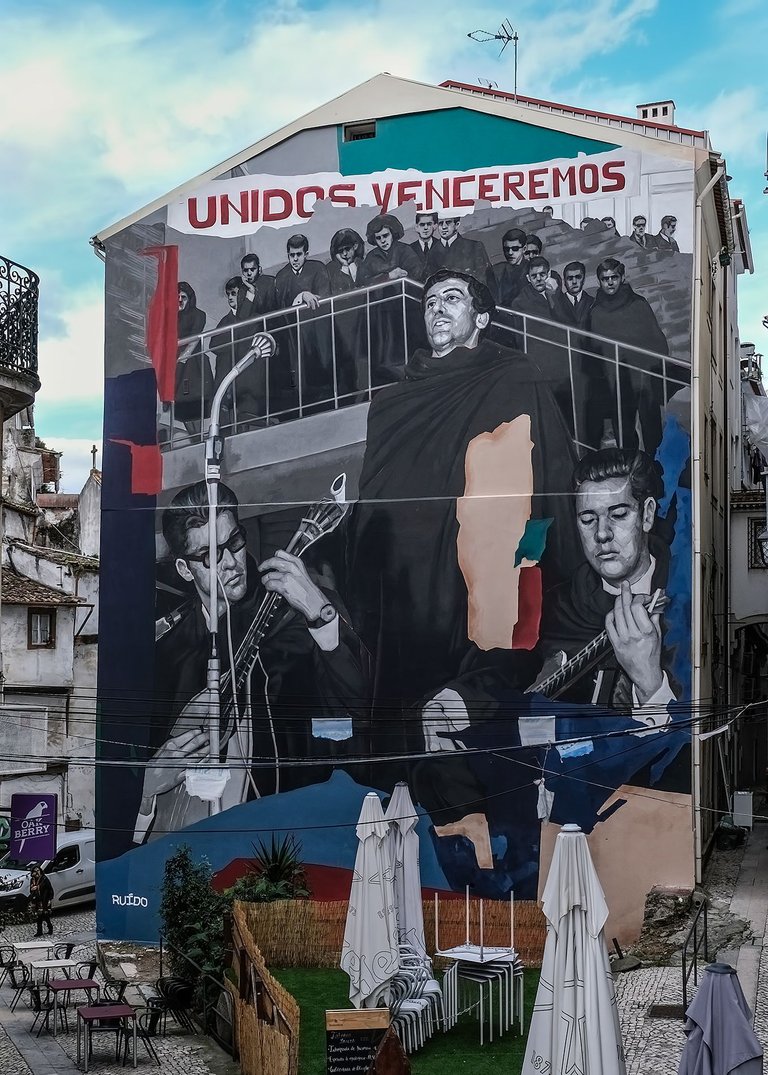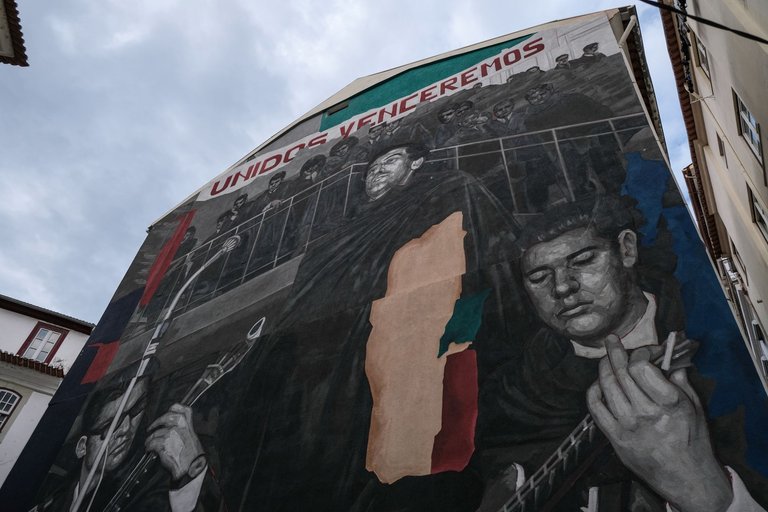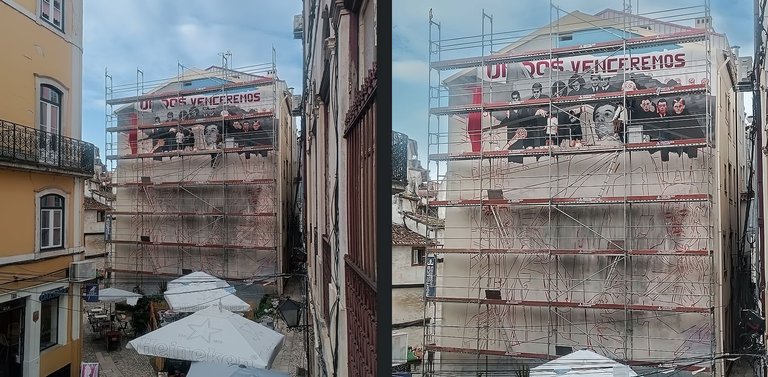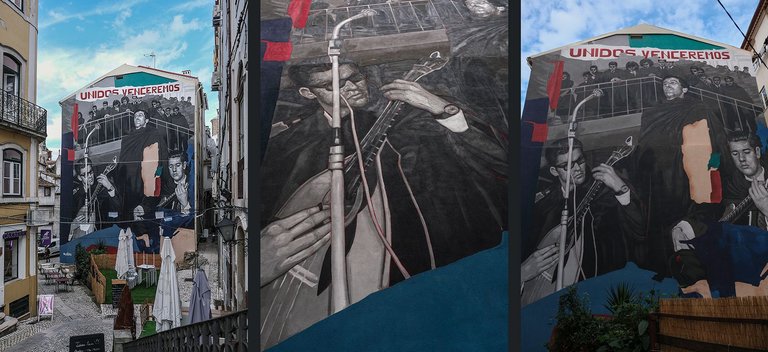

This recently inaugurated mural is one of the 14 that make up the “Murals of Freedom” initiative. Located in Rua dos Gatos, Coimbra (Portugal), it evokes the decisive role of “Canção de Coimbra” (Eg: Song of Coimbra) in raising political awareness of freedom. Featured are Adriano Correia de Oliveira, António Portugal and Rui Melo Pato.
The mural is called “Student Demonstrations and Intervention Music/April Music” and is the work of the artists Draw (Frederico Soares Campos) and Alma (Rodrigo Guinea Gonçalves).
“Murals of Freedom” is an initiative by Projeto Ruído, with the support of Turismo de Portugal, as part of the celebrations of the 50th anniversary of April 25, 1974. There are 14 murals in different cities across the country, depicting important episodes related to the historical legacy of the Revolution. [I previously published the one in Faro.]
The student movement in Coimbra played a leading role in this part of Portugal's history. During the 1960s and 1970s, Coimbra students were the protagonists of various demonstrations and strikes that challenged the political regime of the time. The Song of Coimbra was one of the weapons used, hence the creation of this mural.
Translated with DeepL.com (free version)



Still under construction here.
🇵🇹 👇 🇧🇷
! [LINGUA PORTUGUESA]
Unidos Venceremos
Este mural recentemente inaugurado é um dos 14 que integram a iniciativa “Murais da Liberdade”, situado na Rua dos Gatos, Coimbra, evoca o papel determinante da Canção de Coimbra na consciencialização política para a liberdade. Em destaque Adriano Correia de Oliveira, António Portugal e Rui Melo Pato.
ᅠ
O mural chama-se “Manifestações Estudantis e Música de Intervenção/Música de Abril”, é uma obra dos artistas Draw (Frederico Soares Campos) e Alma (Rodrigo Guinea Gonçalves).
ᅠ
“Murais da Liberdade é uma iniciativa assegurada pelo Projeto Ruído, com o apoio do Turismo de Portugal, no âmbito das comemorações dos 50 anos do 25 de Abril de 1974. São 14 murais em diferentes cidades do país, que representam episódios marcantes relacionados com o legado histórico da Revolução. [Já anteriormente publiquei o de Faro]
ᅠ
O movimento estudantil de Coimbra teve um papel preponderante nesta parte da história de Portugal. Durante as décadas de 1960 e de 1970, os estudantes de Coimbra foram protagonistas de várias manifestações e greves que desafiaram o regime político da época. A Canção de Coimbra foi uma das armas utilizadas, daí a criação deste mural.


